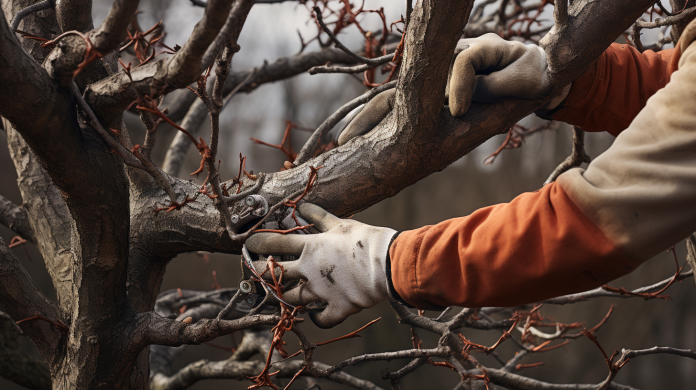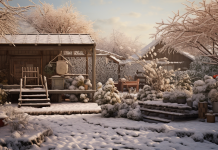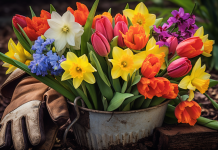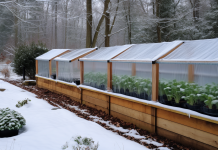In the realm of tree and shrub maintenance, autumn pruning essentials plays a useful role in promoting optimal health and growth.
When to Prune: Timing Is Key for Optimal Results
For optimal results, timing is important when determining when to prune trees and shrubs in the autumn. The general rule of thumb is to prune deciduous trees and shrubs in late winter or early spring, before new growth begins. This allows for the removal of dead or diseased branches, as well as shaping and thinning to promote airflow and sunlight penetration.
However, certain species may require different pruning times. It is essential to research and understand the specific needs of your plants. Pruning too early or too late can disrupt the natural growth cycle and result in weakened or stressed trees and shrubs.
You will need to ensure you are pruning at the optimal time for your specific plants.
Tools of the Trade: Equipment for Autumn Pruning
Essentials
Here are some essential pruning tools:
| Tool | Description | Purpose |
|---|---|---|
| Pruning Shears | Small, handheld scissors with sharp blades | Ideal for cutting small branches and stems |
| Loppers | Long-handled pruning tools with scissor-like blades | Suitable for cutting thicker branches |
| Pruning Saw | A handheld saw with a narrow, curved blade | Used for cutting larger branches or removing deadwood |
| Hedge Trimmer | A powered tool with reciprocating blades | Designed for trimming and shaping hedges |
| Pole Pruner | A pruning tool attached to a long pole, perfect for reaching high areas | Allows for pruning tall trees without the need for a ladder |
Pruning Techniques: Proper Methods for Tree and Shrub Maintenance
Pruning techniques involve the strategic removal of branches to promote healthy growth, shape the plant, and remove any dead or diseased wood.
One important technique is called ‘thinning,' which involves selectively removing branches to improve airflow and light penetration. This helps prevent the growth of fungi and promotes overall tree health.
Another technique is ‘heading back,' which involves cutting back branches to stimulate new growth and maintain a desired shape. When pruning, it is important to make clean cuts just outside the branch collar, avoiding leaving stubs or damaging the trunk.
The branch collar is a swollen or slightly raised area of tissue that encircles the base of a branch where it connects to the trunk of a tree or the main stem of a shrub. It is often more pronounced on some tree species than others. The branch collar contains specialized cells that help the plant heal and seal off the pruning wound when a branch is removed, protecting the tree or shrub from disease and decay. Proper pruning techniques typically involve making the cut just outside the branch collar to promote healthy wound closure and minimize the risk of harm to the plant.
Common Pruning Mistakes to Avoid
Unfortunately, it is easy to unintentionally make common pruning mistakes that can harm the health and appearance of their trees and shrubs. These mistakes can lead to weakened plants, reduced flower or fruit production, and even the eventual death of the plant.
Here are some common pruning mistakes to be aware of:
- Topping: This involves cutting the top of a tree or shrub, leaving stubs that are unsightly and prone to disease.
- Over-pruning: Removing too much foliage can stress the plant, making it more susceptible to pests, diseases, and environmental stressors.
- Improper pruning cuts: Incorrect cuts can damage the plant and promote the growth of weak, poorly attached branches.
Tree Pruning Tips: Maximizing Growth and Promoting Structural Integrity
- First and foremost, pruning should be done during the dormant season, which is typically in the autumn or winter. This allows the tree to focus its energy on healing and regenerating before the next growing season.
- When pruning, it is essential to remove any dead or diseased branches to prevent the spread of infection.
- Additionally, thinning out the canopy will increase air circulation and sunlight penetration, maximizing fruit production and overall tree health.
- Lastly, pruning for aesthetics may be important if you have a desired shape and appearance for the tree.
Shrub Pruning Tips: Enhancing Blooms and Controlling Size
- Timing: Prune spring-flowering shrubs just after they bloom, as they set buds on old wood. Prune summer-flowering shrubs in late winter or early spring before new growth begins.
- Selective Pruning: Remove dead or damaged branches to improve overall health and appearance. Thin out crowded growth to increase air circulation and sunlight penetration.
- Size Control: To control size, prune back shrubs by selectively removing one-third of the oldest stems at ground level. This encourages new growth and prevents overgrowth.
- Aesthetics: Consider the natural shape and growth habit of the shrub when pruning. Maintain a balanced form by removing any crossing or rubbing branches.
Winter Protection: Preparing Your Trees and Shrubs for the Cold
Applying a layer of mulch around the base of your trees and shrubs helps to insulate the soil, regulate temperature fluctuations, and retain moisture. This is particularly important for newly planted or young trees and shrubs, as they are more susceptible to frost damage.
Additionally, it is important to take steps to prevent frost damage. Wrapping the trunks of young trees in burlap or using frost blankets can provide an extra layer of protection against freezing temperatures.
Safety First: Precautions for Pruning Trees and Shrubs Safely
Before beginning any tree or shrub pruning, it is important to prioritize safety measures to ensure a secure and accident-free process.
One of the most crucial safety precautions is wearing the appropriate protective gear. This includes safety glasses or goggles to protect the eyes from debris, gloves to protect the hands from cuts and blisters, and sturdy footwear with good traction to prevent slips and falls.
Key Takeaways
- Sometimes Autumn may not be the ideal time for pruning as it can lead to stunted growth or susceptibility to diseases.
- No pruning is a lot better than bad pruning, there's always next year.
- Pruning during the dormant season normally helps prevent damage and stunted growth.
- Different species may have specific pruning times, so please do your homework for your specific species.
Conclusion
In conclusion, proper pruning techniques and timing will help maintain healthy trees and shrubs. Tree pruning tips focus on promoting growth and structural integrity, while shrub pruning tips aim to enhance blooms and control size.
Please see our supporting article:
Autumn Cleanup Like a Pro: Expert Tips for a Healthy Garden



